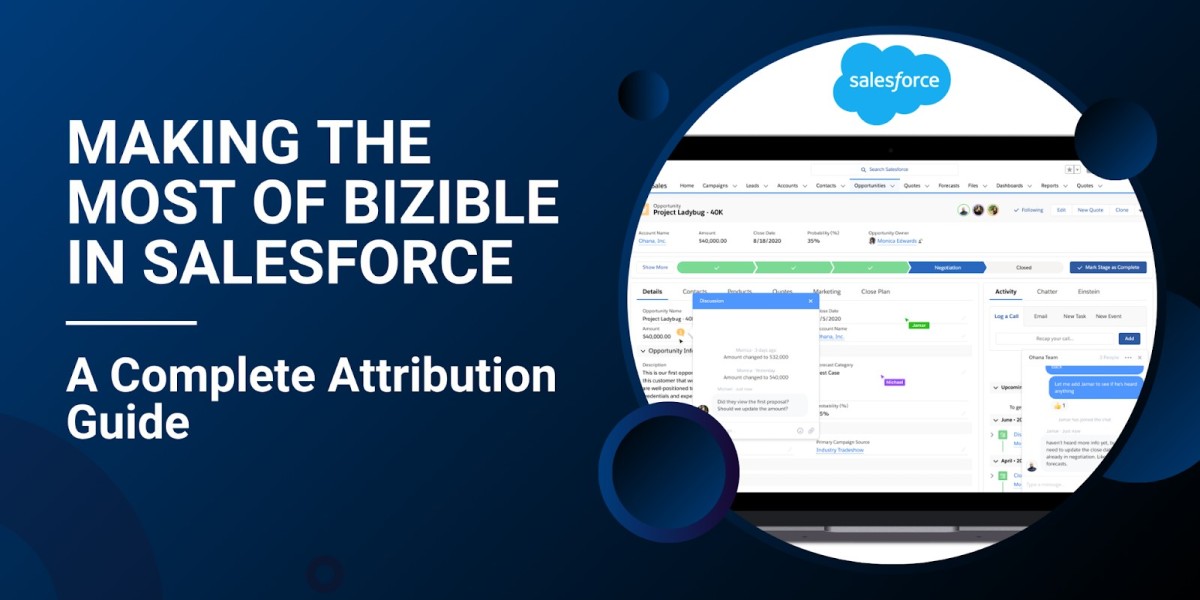In today’s fast-paced marketing world, understanding which efforts lead to sales is more important than ever. Companies spend a lot on marketing but often lack clarity on what drives revenue. This is where marketing attribution comes into play. It helps you connect the dots between your marketing activities and actual sales outcomes.
For Salesforce users, Bizible provides a smart way to track these connections. It collects data from multiple marketing channels and links that information directly to your Salesforce sales pipeline. This guide explains how to use Bizible within Salesforce, helping you see the full picture of your marketing performance.
What Is Marketing Attribution, and Why Does It Matter?
Marketing attribution is about knowing which campaigns and channels contribute to customer conversions. It answers questions like, Did this email campaign help close the sale? Or was it the paid search ad? Instead of guessing, attribution lets you measure the real impact.
Without attribution, it’s easy to misplace your marketing budget. You may invest in one channel that seems promising but doesn’t drive results. Attribution helps you distribute your marketing spend more wisely by showing what works.
Importantly, many sales journeys are not linear. Customers often interact with several marketing channels before buying. Attribution tracks all these touchpoints and gives credit to each, giving a fuller view of the journey.
How Bizible Works with Salesforce for Marketing Attribution
Bizible fits smoothly into Salesforce. It tracks interactions across email, paid ads, social media, events, and more. Then, it connects this data to Salesforce records like leads, contacts, and opportunities.
This integration creates one place where marketing and sales teams can see the same data. Marketers get clear insights on which campaigns influence deals. Sales teams gain a better understanding of how prospects engage before they buy.
Bizible’s tracking uses unique IDs to match marketing activities to Salesforce contacts. This means no touchpoint is missed or counted incorrectly. With this detailed data inside Salesforce, teams can analyze performance without switching platforms.
Picking the Best Attribution Model for Your Business
Different companies need different ways to assign credit to marketing channels. Bizible supports several attribution models. The most common are:
First-touch attribution: Credits the first interaction a prospect has with your brand. Good for measuring lead generation.
Last-touch attribution: Gives credit to the last interaction before a sale. Helps identify closing tactics.
Multi-touch attribution: Distributes credit across multiple touchpoints. Offers a balanced view of the entire customer journey.
Choosing the right model depends on your sales process and marketing goals. For example, if your sales cycle is long with many interactions, multi-touch is more accurate. If your goal is to track how new leads enter the funnel, first touch may be best.
Understanding these models is key to interpreting your data correctly. It prevents misleading conclusions and supports better planning.
Managing Multi-Channel Campaigns Effectively
Marketing campaigns often run across many channels at once. Email, social media, paid search, webinars, and events all play a part. Tracking each of these interactions is complicated but essential.
Bizible automates this tracking. It captures every interaction and attributes it correctly, no matter the channel. This avoids gaps in your data that could hide important insights.
For example, a prospect might first see a paid ad, then receive an email, and finally attend a webinar before buying. Bizible tracks all these touches and shows how they work together.
This clarity helps marketers decide which channels to invest more in and how to coordinate campaigns for the best results.
Reporting Tools That Help Make Sense of Data
Collecting data is only useful if you can understand it. Bizible offers detailed reports and dashboards to help teams analyze marketing performance. You can see conversion rates by channel and campaign ROI, and identify where prospects drop off in the sales funnel. These insights guide marketers in adjusting campaigns to improve outcomes.
The reports are customizable, allowing teams to focus on the metrics that matter most. Regular review of these reports keeps strategies aligned with business goals and changing market conditions. By using data-driven insights, teams reduce guesswork and build more effective marketing plans.
Benefits of Using Bizible in Salesforce
Integrating Bizible with Salesforce gives several clear advantages:
Complete Visibility: See all marketing interactions linked directly to sales outcomes.
Improved Collaboration: Marketing and sales teams work from the same data, reducing misunderstandings.
Data Accuracy: Automated tracking reduces human error and missing data.
Better Budget Allocation: Understand which channels bring the best return on investment.
Streamlined Reporting: Get easy access to detailed, customizable dashboards inside Salesforce.
Deeper Customer Insights: Understand how prospects move through the buying process across multiple touchpoints.
Time Savings: Automate manual data collection and reporting tasks.
Adaptable Models: Use different attribution models depending on your goals.
These benefits help businesses become more efficient and focus on marketing that drives growth.
Tips to Get the Most from Bizible and Salesforce
To fully benefit from Bizible, it is important to maintain clean, organized data within Salesforce. This means managing leads, contacts, and opportunities carefully. Poor data quality will reduce the accuracy of attribution reports.
Training both marketing and sales teams on using Bizible encourages consistent data entry and adoption of best practices. Everyone should understand how the system works and why attribution matters.
It is also helpful to periodically review your attribution models. As your business grows or changes, different models might provide better insights.
Regular audits of data and reports can catch any issues before they affect decision-making.
Conclusion
Marketing attribution can be complex, but Bizible’s integration with Salesforce makes it manageable. By tracking all marketing touches and linking them to sales results, companies gain clear insights into their performance.
With this knowledge, businesses can make smarter choices about where to focus marketing spend. Teams work better together with shared data, improving overall effectiveness.
Ultimately, a well-planned attribution strategy leads to stronger campaigns, better customer experiences, and more sales.








